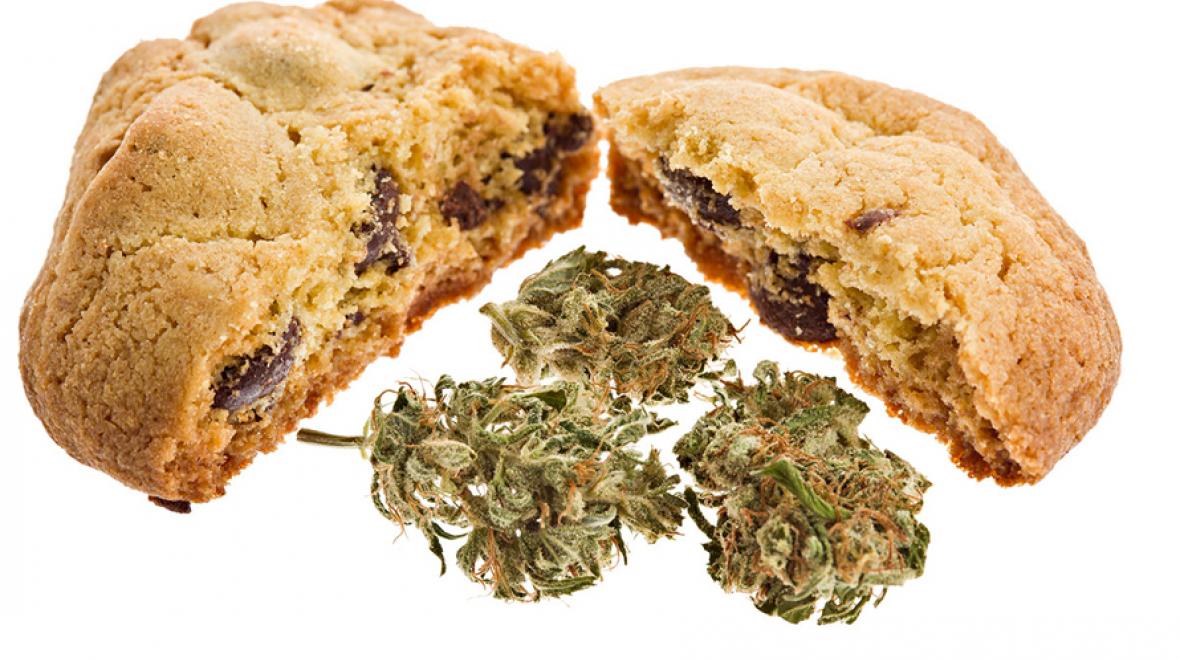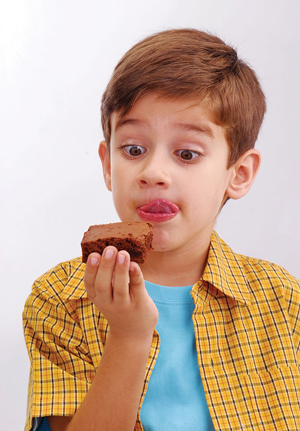
Teens looking to catch a buzz after an Eastside high school’s recent winter tolo dance were met with a little less smoke and a lot more sugar. Instead of joints and cigarettes, marijuana edibles — mostly candies and cookies — were pocketed and slipped into the dance and after-parties, often without raising suspicion among supervising adults, says 17-year-old Hannah, a junior at the school. “That was the main way I heard about parties going down,” she says. “It’s a very recent trend. [Pot] has always been around, but this seems much more prevalent.”
It’s easy to understand why: Marijuana edibles look like supermarket products, and there’s no smoke, so kids can use them without adults catching on. Even though pot edibles, like all marijuana products in Washington state, are legally off-limits to the under-21 crowd, acquiring the treats is no problem for kids, says Hannah.
In her experience, many kids get edibles from older siblings or college-age friends, most of whom purchase them at one of Seattle’s many retail pot establishments. Since the state’s first recreational marijuana shops opened in 2014, the state has granted nearly 1,000 producer licenses and almost 500 retail licenses, making pot truly mainstream.
The new drug of choice
While today’s teens are less likely to use tobacco or drink, youth marijuana use is creeping up. Washington’s most recent Healthy Youth Survey (HYS) showed decreasing alcohol and tobacco use with teens two times more likely to use marijuana than smoke cigarettes. One in five high school sophomores and one in four high school seniors reported marijuana use in the past month.
Kids’ bodies and brains differ from those of adults, and tolerance for marijuana products varies widely among youths.
It’s important to note that the HYS indicates fewer teens believe marijuana to be harmful, says Liz Wilhelm, M.S., of the Adolescent Medicine division at Seattle Children’s Hospital’s and the drug-free communities coordinator with the Prevention Works in Seattle (WINS) Coalition. “As beliefs about perceived harm go down, use goes up,” says Wilhelm.
If teens don’t believe marijuana is harmful, it’s likely because adults don’t, either. A majority of Seattleites voted to legalize recreational pot in 2012, making it clear that we don’t object to pot-related relaxation for adults. But kids’ bodies and brains differ from those of adults, and tolerance for marijuana products varies widely among youths, says Dr. Erica Liebelt, medical director for the Washington Poison Center (WAPC).
Marijuana-related calls to WAPC rose to 288 in 2016. In 2015, there were 272 calls, with teens ages 13–19 representing the largest age group, according to WAPC’s clinical director, Alexander Garrard, Pharm.D.
The largest share of pot-related WAPC calls involved the familiar, mossy green plant form. The second-highest number of calls were related to accidental or intentional ingestion of marijuana-laced edibles, followed by the use of marijuana concentrates, often by “dabbing,” i.e., inhaling vaporized dabs, or highly concentrated THC, the drug’s main mind-altering component.
Regardless of the form of marijuana, taking in too much of the drug can have serious medical consequences for children, though those effects are usually not life-threatening. Symptoms range from irritability and crying to uncontrollable vomiting, psychosis and loss of consciousness, says Liebelt. Longer-term use impacts cognitive development because the brain’s frontal lobe — the home of executive functions, such as planning and organizing — continues to develop into a person’s mid-20s. According to research by Duke University, youths who use cannabis regularly showed an average decline in IQ of 8 points as adults.
 The cookie crumbles
The cookie crumbles
While youth marijuana use in any form should concern parents and caregivers, there’s something particularly troubling about kids and pot edibles, says Liebelt.
First, there’s the undeniable appeal of a piece of candy or gooey chocolate brownie, raising the risk of mistaken ingestion. Accidentally smoking or dabbing pot isn’t likely, but accidentally eating a marijuana cookie? It happens all the time, says Garrard of WAPC.
Because the THC in an edible marijuana product can take an hour or two after ingestion to take effect, overdosing is all too easy, says Liebelt. Kids may eat a piece of candy and feel no effect, so they’ll eat another piece 20 minutes later. Within a couple of hours, they could be feeling sicker than they’ve ever felt, or worse — they could lose consciousness.
Making matters more difficult: Packaging laws haven’t caught up to the vast array of edibles on the market, says Wilhelm. Most pot edibles are wrapped in plastic, not unlike a brownie you’d buy at any snack counter, so kids aren’t able to easily tell that the treat on the counter could be dangerous.
If your child does end up in the emergency room, there’s often no way to know how much pot a child has ingested, because manufacturers can’t guarantee a uniform distribution of cannabis within an edible pot product. That means treating an overdose becomes a guessing game, says Leibelt.
“Cutting a pot cookie or piece of candy in half doesn’t mean that half the THC is in one half of the cookie,” she says. “So, two kids can take a bite of the same brownie and get vastly different doses of THC.”
Sticker shock
A new rule may help with preventing accidental ingestion. As of February 2017, a distinctive “Not for Kids” label with a red hand and the WAPC emergency helpline number (800-222-1222) is now required to appear on Washington pot products. “It’s another step in the effort to deter youth access to marijuana edibles,” says Garrard.
The label is affixed to the product’s exterior packaging, which may soon be different, too. A new bill under consideration in the 2017 legislative session calls for “child-resistant” packaging for edible marijuana products.
Still, more work remains to resolve this issue, says David Baker, the mayor of Kenmore. Baker has been actively involved with local prevention efforts. “Simply affixing a new label to a dangerous product isn’t enough if the product itself is attractive to kids,” he says.
Most parents . . . said that they talked to their kids about pot, but that they didn’t think other parents in their community were doing the same.
Ultimately, the main responsibility lies with adults. “Adults need to lock up their pot edibles like they lock up medicine,” says Baker.
Parents also need to talk about pot not only with their children, but with the parents of their kids’ friends, says Wilhelm, whose team recently surveyed parents of local middle school students about pot.
“Most parents who responded said that they talked to their kids about pot, but that they didn’t think other parents in their community were doing the same,” she says.
Talking to kids is one of the best ways to keep ingestion by underage consumers from happening. “We know that if parents communicate that they don’t want kids to use pot, it has a strong protective effect,” Wilhelm says. Because your kids likely spend time at homes other than their own — homes where edibles may be stored in plain sight — it’s vital to keep communication flowing, not just between parents and children, but between parents, teachers, neighbors and community members.
Seventeen-year-old Hannah agrees. “The no. 1 thing that parents can do is just to reinforce the message that they don’t want their kids to do this,” she says. “If you don’t want your kids doing it, it’s about keeping the message consistent.”











